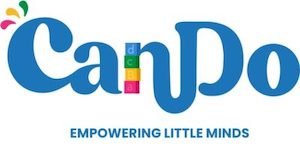Kindergarten
Kindergarten
4-5 Years)
Is your kid prepared for school? While every child is different and will grow and develop at his or her own pace, educators and experts in child development can agree on a core set of skills that are necessary for academic growth and success. Here is a rundown of the sorts of things kids should have seen, heard, read, and learned before they start school.
Skills that Children Will Learn
Solves problems or conflicts with words
Please, thank you, and excuse me are used.
Adapts to new circumstances
Attempts new tasks with the understanding that making mistakes is acceptable.
Displays accomplishments with pride
Follows a straightforward path
Continues with an activity until it is completed
enquires for assistance
Interacts with adults and peers appropriately.
Respects others’ rights, property, and feelings
Collaborative effort (listens to others, shares and takes turns)
Exhibits increased self-control
Participates in cleanup efforts
Accepts responsibility for personal belongings (lunch, coat, etc.)
Is capable of dressing oneself
Follows a routine and schedule for personal hygiene, meals, and bedtime.
Good hygiene and table manners are used.
demonstrates appropriate bathroom skills
Simple safety rules are followed.
Offers to assist peers and family members
Attempts to regulate emotions and expresses feelings verbally
Assembles puzzles
snips with scissors
Correctly holds and employs crayons, markers, pens, and pencils
Block constructions
Attempts to tie own shoes
Ball bouncing, kicks, throwing, and catching
Tricycle rider
Outdoor activities such as running, jumping, and climbing are favourites.
Objects are matched or grouped based on their size, shape, or colour.
Objects that are the same are grouped together.
Understands concepts such as in/out, under/over, on/off, front/back, and so on.
Demonstrates an understanding of the passage of time, including concepts such as before and after, as well as today, yesterday, and tomorrow.
Experiments with new games and toys enthusiastically, sometimes through trial and error.
Describes how objects are similar or dissimilar.
Speaks in sentences
Follows oral one- and two-step instructions
Uses sentences with two or more ideas
Makes use of descriptive language
Knows and can recite some popular nursery rhymes and songs
Pretends, composes, and invents songs or stories
relates or retells stories and/or daily experiences
inquires and expresses interest
Clearly expresses ideas so that others can understand them
Examines books or pictures on their own
Pretends to read books by looking at the pictures in them
Make an effort to read in everyday situations (signs, labels, etc.)
Rhyming words are recognized.
Words are formed by blending sounds.
Recognizes some common print words
Many uppercase and lowercase letters are recognized.
Some letter sounds are recognized.
Describes the actions and feelings of characters in a story.
Stories are related to personal experiences.
Orders the events of a story
Makes an attempt to write, scribble, or draw
Requests that you write words or notes to others.
Attempts to write his or her own name and recognizes it in print
Using language such as “more,” “less,” and “same as,” compares the size of groups of objects.
Organizes objects by size (big to small, or small to big)
Uses comparison words such as “bigger,” “smaller,” “heavier,” and so on.
Understands the concepts of none, some, and all, as well as greater than and less than
Recognizes and draws squares, circles, and triangles
Counts four to ten objects correctly.
Understands that the final count represents the total number of objects in a set.
Recognizes some numbers from 1 to 10.
Can tell the difference between numbers and letters and understands how numbers relate to quantity
Understands how addition and subtraction work
Shows interest in and inquires about objects and events observed in their surroundings
Notices similarities and differences between objects and materials
Knows some common plant and animal facts, such as what they eat and baby names
Recognizes some sky objects such as the sun, moon, clouds, and lightning.
Basic colours are recognized and named.
Draws recognizably recognizable shapes and simple objects
With pictures, it tells a story.
Moves in time with the music
Investigates common musical instruments
Likes to improvise or mimic musical patterns
Basic traditions such as birthdays are recognized.
Recognizes that people live in various parts of the world and have different customs and traditions.
Investigates the use of simple maps and visual representations of neighbourhoods or communities.
